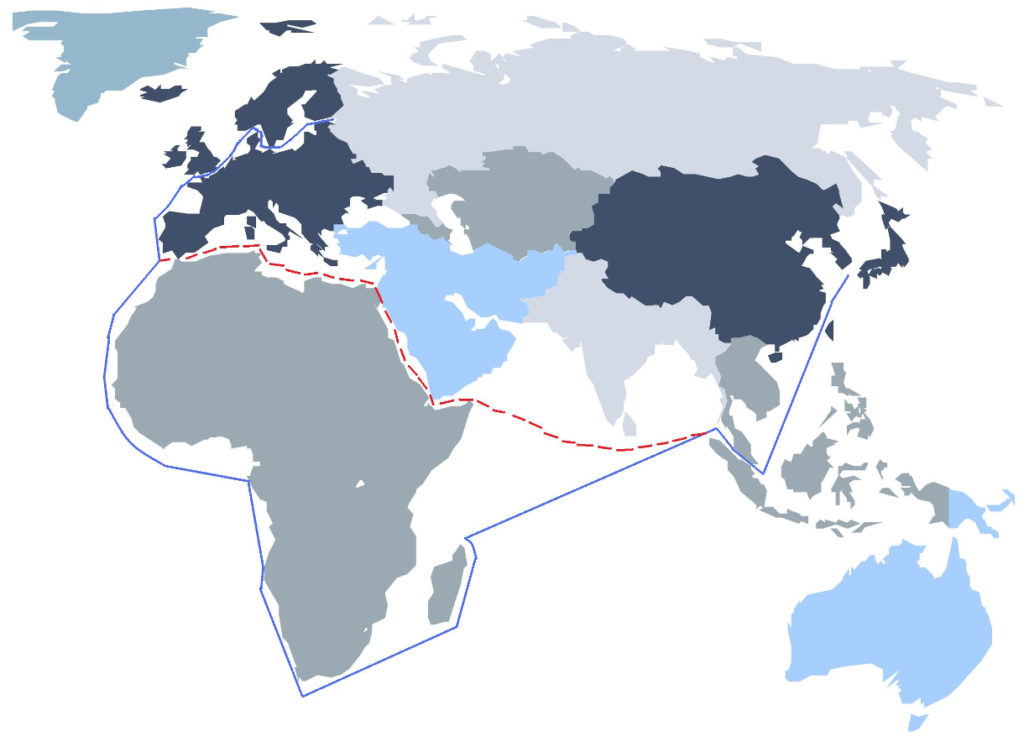On May 27, 1905, the Japanese Navy engaged the Russian Second Pacific fleet in the two-day Battle of Tsushima (May 27-28, 1905). In the aftermath, the Russian fleet was annihilated, with 10,000 Russian sailors killed or captured, 21 ships sunk, including 7 battleships, and of the 38 Russian ships that started the voyage, only 3 managed to reach Vladivostok. Japanese losses were 700 dead or wounded, and only 3 torpedo boats sunk.

Background By March 1905, Japanese forces had gained control of the entire southern Manchuria, including Port Arthur, the strong Russian outpost. But they had failed to annihilate the Russian Army (which remained relatively potent despite the high losses). Because of serious logistical problems, the Japanese Army decided to abandon plans to advance further north.
Despite the series of battlefield defeats, Tsar Nicholas II continued to believe that the Russian Army would prevail eventually in a protracted war. The now completed Trans-Siberian Railway could transfer more troops and weapons to the Far East. But these hopes would be dashed in the Battle of Tsushima.
In October 1904, while the Japanese Third Army was yet besieging Port Arthur, Tsar Nicholas II ordered the Russian Baltic Fleet, which was led by eight battleships, to head for Port Arthur and break the Japanese naval blockade, and reinforce the Russian Pacific Fleet. The Russian Baltic Fleet, soon renamed the Second Pacific Fleet, then embarked on a seven-month (October 1904-May 1905) 33,000-kilometer voyage half-way around the world by way of the Cape of Good Hope, and around the southern tip of Africa. The Russian fleet was forced to take this much longer route after being denied passage across the Suez Canal by Britain following the Dogger Bank incident. In this incident, which occurred in the North Sea in October 1904, the Russian fleet fired on British trawlers, mistaking them for Japanese torpedo boats. The incident sparked a furious British government protest that nearly led to war between Britain and Russia.
In January 1905, while yet in transit, the Russian fleet received information that Port Arthur had fallen. As a result, it was instructed to head for Vladivostok instead. By May 1905, the Russian fleet had entered the waters south of the Sea of Japan, and while traversing the Tsushima Strait, located between Japan and Korea, the fleet was spotted by a Japanese ship, which then alerted the Japanese Navy. In the previous months, the Japanese had followed the progress of the Russian fleet’s voyage, and thus prepared to do battle with it in a decisive showdown.
The Battle of Tsushima sent reverberations around the World – an Asian nation dealing a crushing defeat on a European power. In Russia, Tsar Nicholas II abandoned his hard-line position against Japan. On June 8, 1905, one week after the Tsushima battle, Russia agreed to negotiate an end to the war. (Excepts taken from the Russo-Japanese War).
